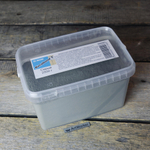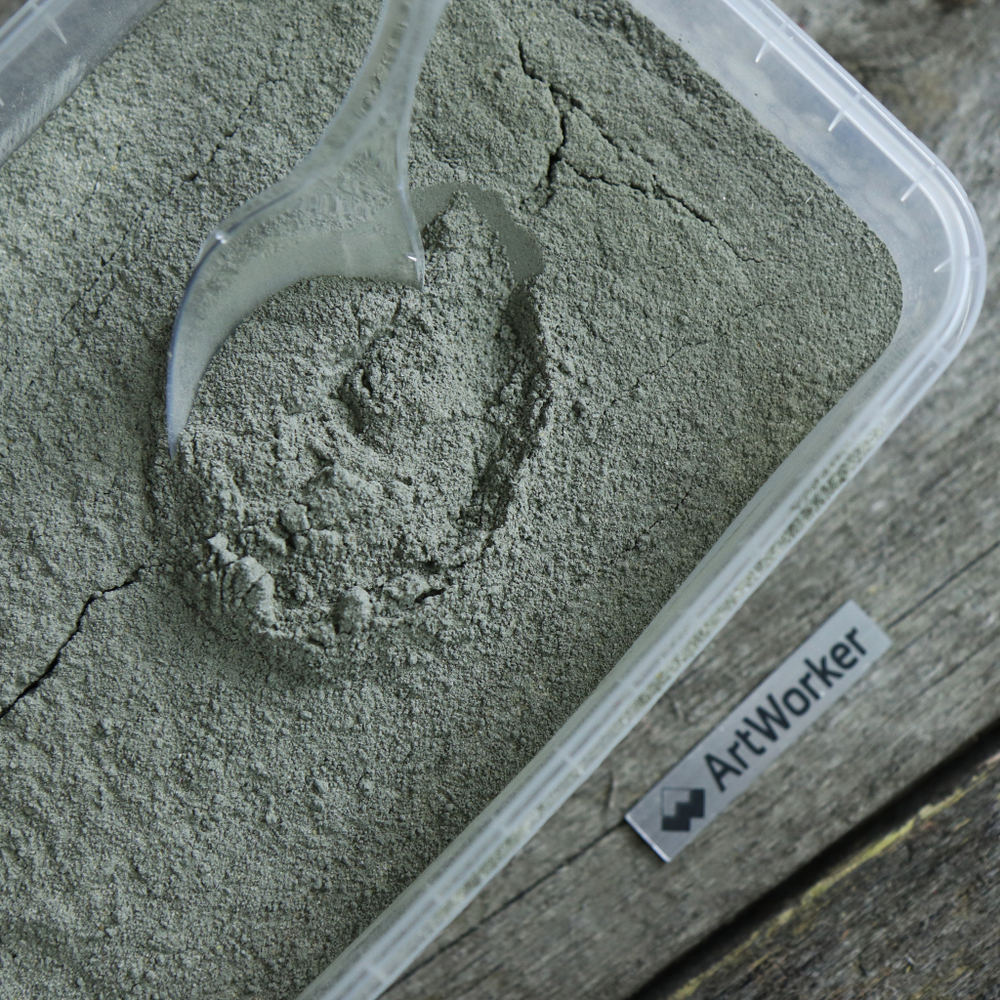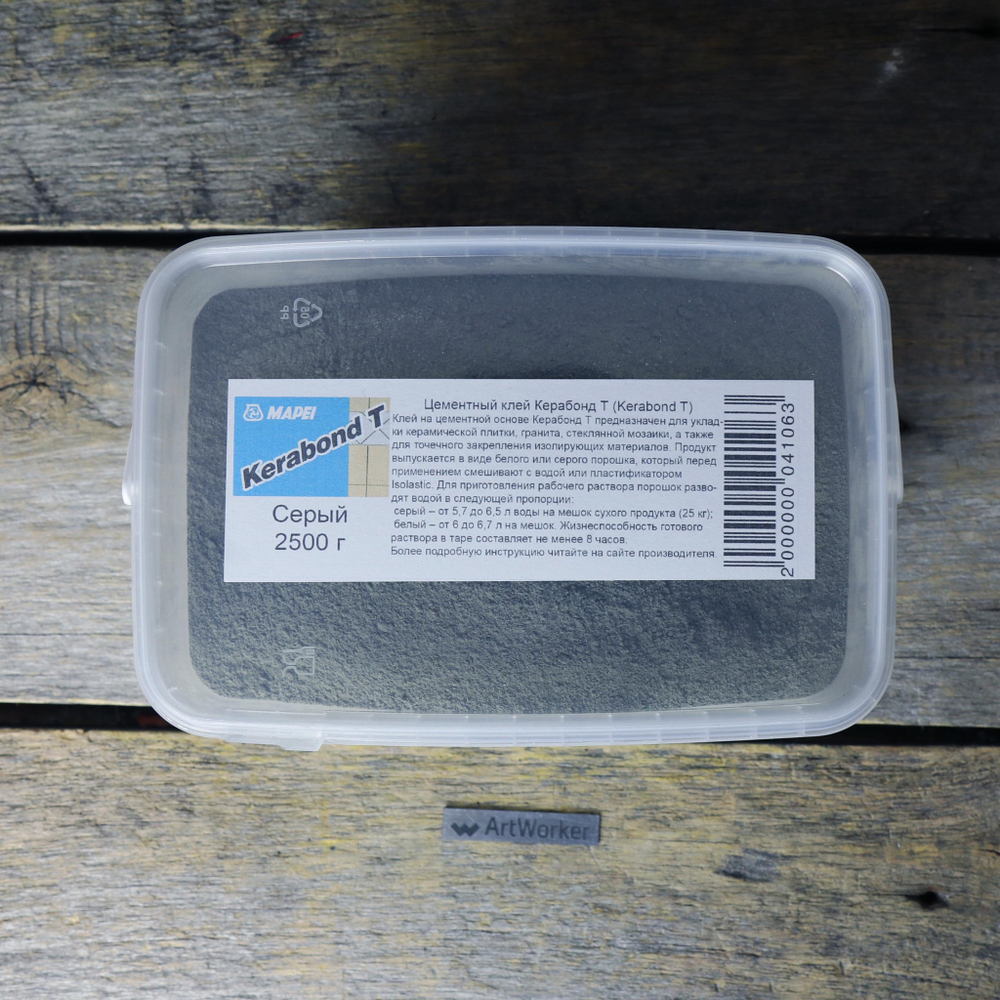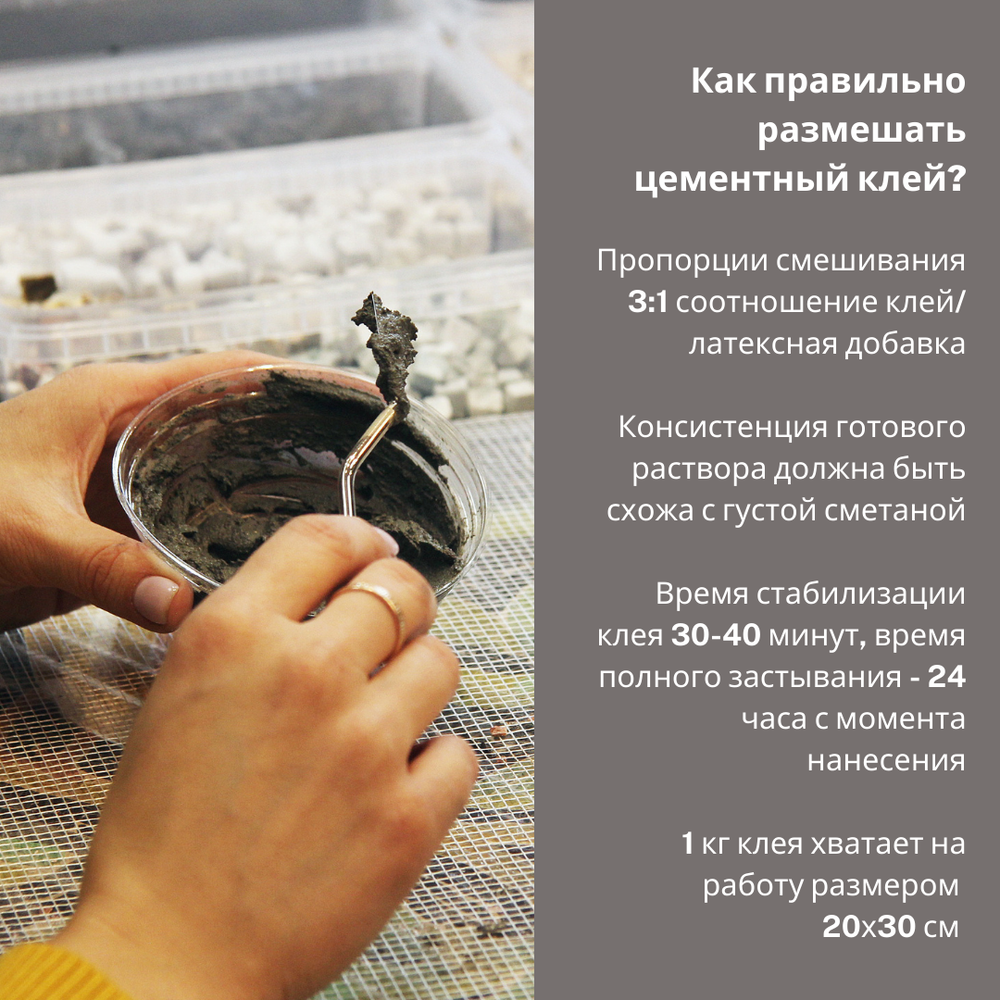Cement-based adhesive for ceramic tiles without vertical sliding.
Kerabond T glue (Kerabond) is suitable for both direct mosaic set-up and reverse mosaic set-up filling. It is recommended to add an Isolastic latex additive to give elasticity, strength and frost resistance to the cement glue. For 1 kg of Kerabond T glue, you need about 280 grams of Isolastic latex additive or water. The most common and reliable glue when working with mosaics.
CLASSIFICATION ACCORDING TO EURONORM EN 12004 Kerabond T ordinary (1) cementitious (C) non-slip adhesive (T) of class C1T. Kerabond T is CE marked in accordance with the ITT N° 25050176-1/Gi (TUM) certificate issued by the Technische Universität München laboratory (Germany).
SCOPE OF APPLICATION: internal and external facing with ceramic tiles and mosaics of any type of floors, walls and ceilings • * spot bonding of insulating materials (expanded polystyrene, polyurethane foam, mineral and glass wool, hardboard, sound-proofing panels, etc.). Typical applications: laying of ceramic mosaics on a paper or mesh basis, laying of ceramic tiles of any type (not glazed, clinker, single firing, etc.) on: * ordinary lime and cement plasters; • conventional or reinforced floating screeds, provided that they are sufficiently seasoned and dried • * gypsum substrates and anhydride screeds after they have been primed.
TECHNICAL SPECIFICATIONS: Kerabond T is a grey or white powder consisting of cement, selected sand, synthetic resins and special additives developed by MAPEI. When mixed with water, Kerabond T forms an easily recyclable solution with a high adhesive capacity and thixotropy, which allows you to easily cover vertical surfaces - even heavy tiles can not slip and fall off. Kerabond T cures almost without shrinkage, after setting it becomes very strong. It adheres perfectly to all conventional building materials. Note: by mixing Kerabond T on the Isolastic compound instead of water, its characteristics are improved, which thus meet the requirements of Class C2 (cement glue), according to Euronorm 12004 and Class S2 (highly deformable glue) according to Euronorm EN 12002.
IMPORTANT RECOMMENDATIONS: Mix Kerabond T with an Isolastic latex additive in the following cases: • on aerated concrete walls; • on precast concrete structures or concrete structures poured in place; • for heated floors; • for large-format ceramic tiles; • for laying glass mosaics; • for laying natural stone, which must be stable and resistant to moisture.
INSTRUCTIONS FOR USE: Preparation of the base for facing with Kerabond T glue, all commonly used construction substrates are suitable, provided that they are smooth, strong, hard, dry, and free of loose plaster, mortar, grease, oil, paint, and mastic. Cement substrates should not be subject to shrinkage after laying the tiles. In the warm season, the plaster must be aged for at least a week for every centimeter of thickness, and the cement screeds must have a holding time of at least 28 days, except when special binders such as Mapecem, Mapecem Pronto, Topcem or Topcem Pronto were used for their manufacture. If the surface is heated in the sun, it must be cooled with water. Gypsum substrates and anhydrite screeds must be perfectly dry, sufficiently firm and free of dust. These substrates must be treated with Primer G or Mapeprim SP, and in areas exposed to moisture during operation, Primer S must be used.















